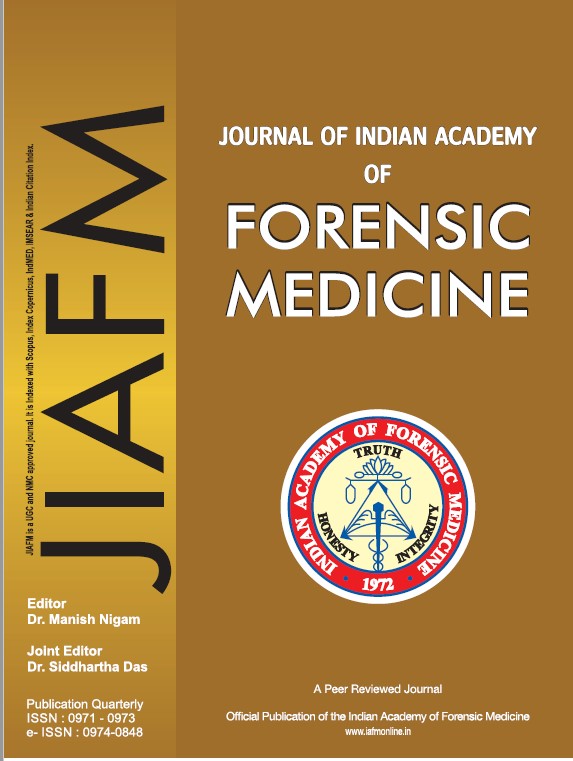Study of Fingerprints in Relation to ABO Blood Groups and Gender
DOI:
https://doi.org/10.48165/Keywords:
ABO Blood Group, Fingerprints, Dactylography, Dermatoglyphics, Rh-Hr Blood-Group System, GenderAbstract
The present study was done evaluate the correlation between fingerprint pattern and ABO blood group and correlation between fingerprint pattern and gender. Both blood group and dermatoglyphic pattern have genetic inheritance so an attempt has been made to analyze their correlation with gender and blood group of an individual. A prospective study was conducted on medical students among whom 120 students were selected for the study, (60 male and 60 female) between the age group 20- 25, any hand deformities and any extra fingers were excluded from the study. The distribution of dermatoglyphic patterns in both hands of individuals and its relationship with gender and different ABO and Rh blood groups was analysed. There were 42.5 % subjects with B blood group, 27.5% with Ablood group, 17.5% with O blood group and 12.5% were having AB blood group. There was a significant association between fingerprint pattern with ABO blood groups (p<0.05). Whereas no significant association between fingerprint pattern and gender was seen. The study concluded that there is a significant association between fingerprint pattern with ABO-Rhesus blood groups and ABO blood groups while there is no significant association between fingerprint pattern with gender.


